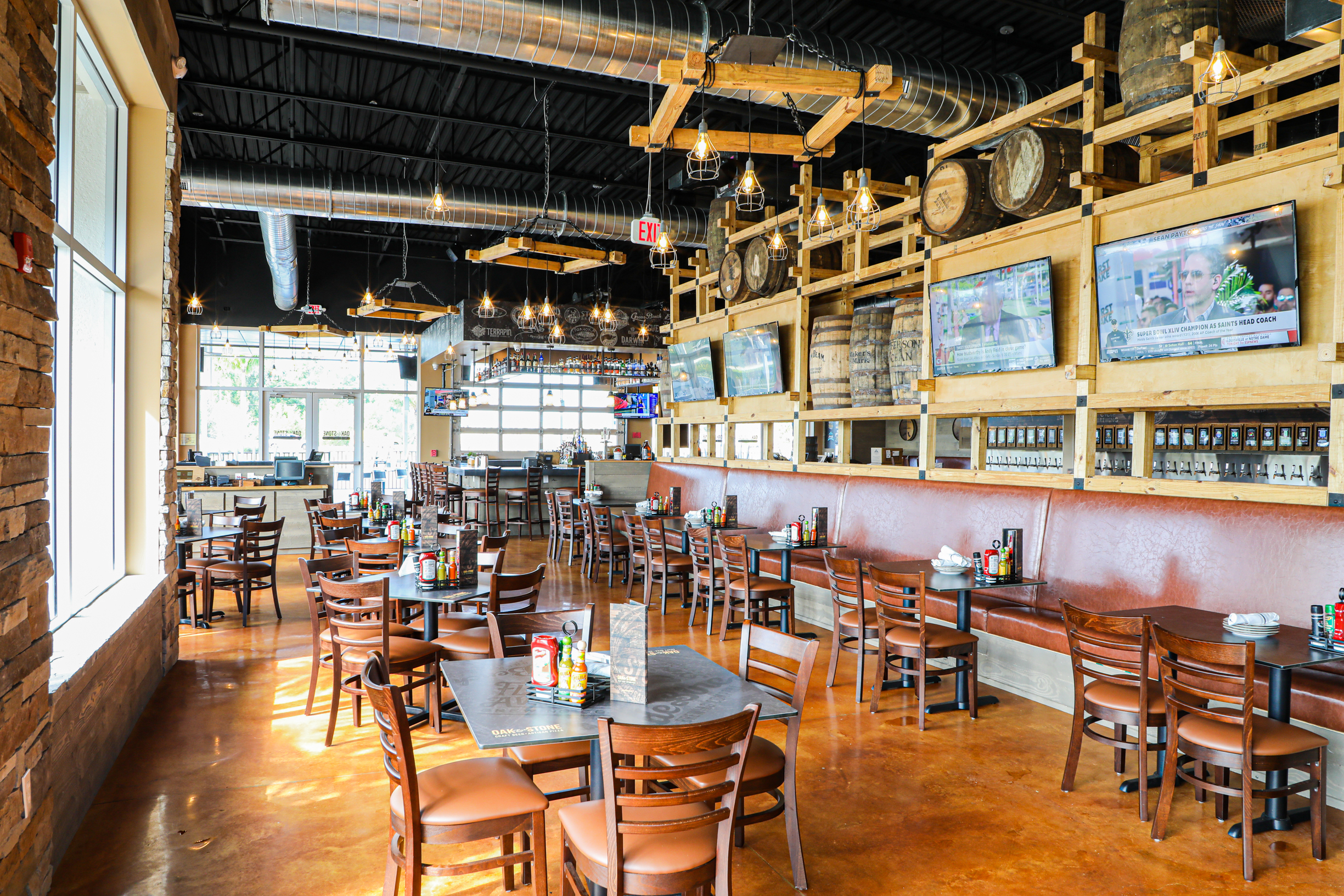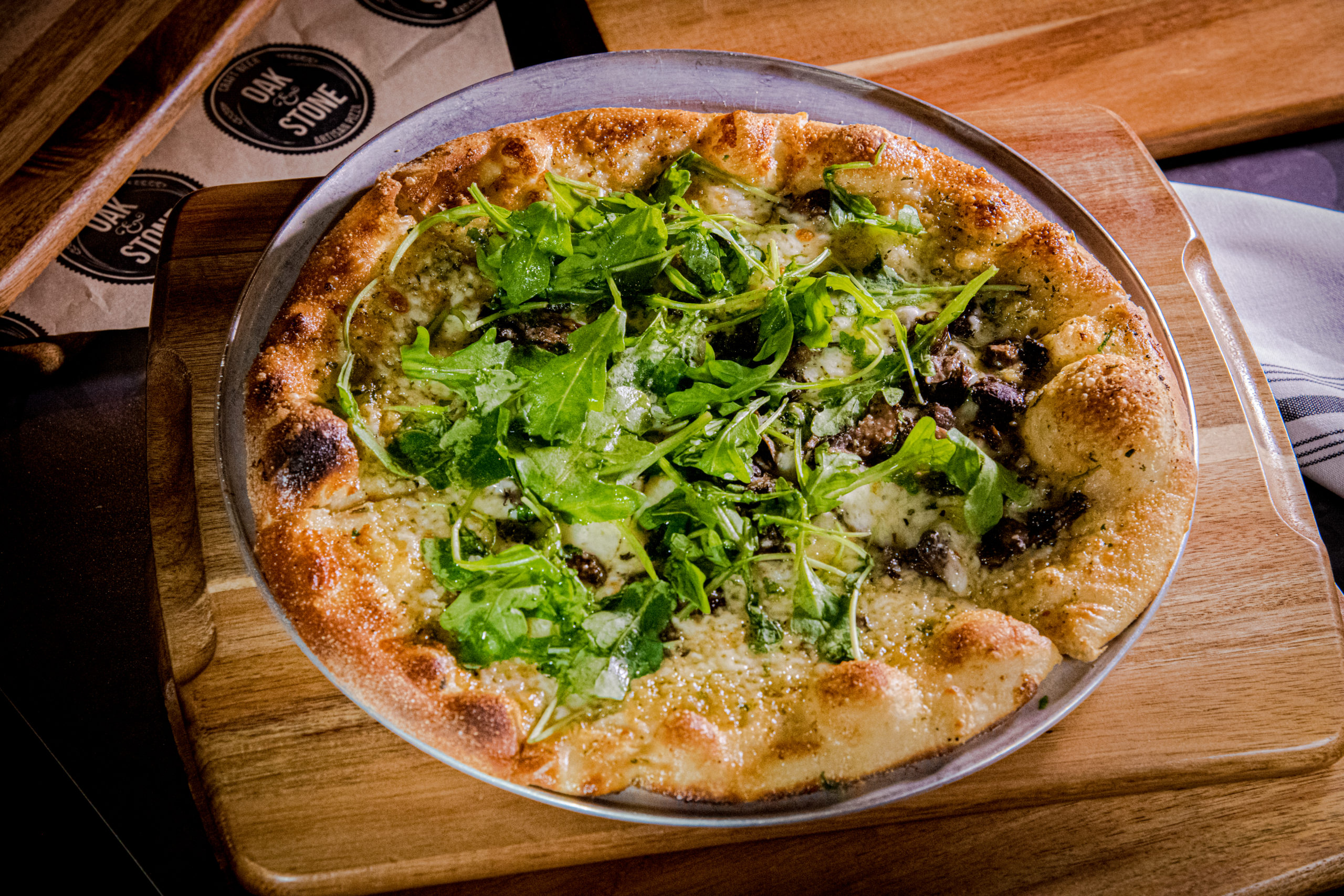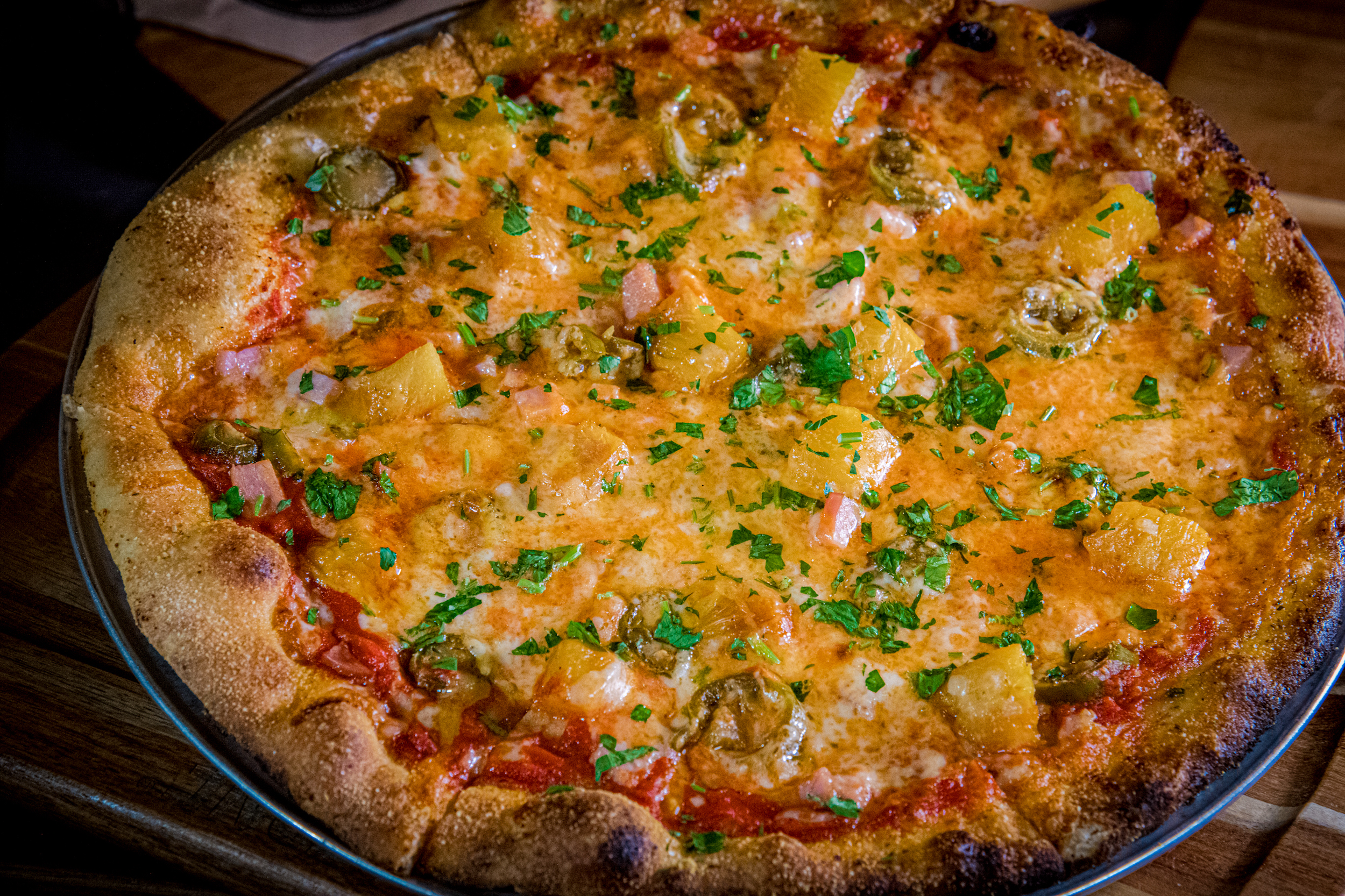Sweat the Small Stuff: Oak & Stone Talks Attention to Detail
Cultivating something unique in a saturated restaurant industry can be a hard ask, but Oak & Stone managed to deliver. The brand found its niche in 2016 in Sarasota, Florida by offering up a menu filled with customizable pizzas, and boasting the largest RFID technology self-serve brew wall in the region, with 56 taps that guests can pour by the ounce.
After realizing the brand’s potential, co-owners Brett Decklever and Joe Seidensticker knew the concept could be a hit in surrounding areas. But before they could further Oak & Stone’s reach, they needed to do some housekeeping. Which meant revamping equipment, altering the business plan and sourcing from a limited talent pool for employees. Within four short years, Oak & Stone expanded with an additional five locations, six in total, scattered throughout Sarasota, Naples, Bradenton and St. Petersburg.
Although Oak & Stone specializes in pies, it prefers the title of a “New American Tavern,” to echo its well-rounded menu of bowls, sandwiches and a hefty selection of novelty pours sourced from local and American breweries. But that doesn’t mean the restaurant doesn’t take great pride in its pizza dough and the meticulous methods that come along with it.
The artisanal wood-fired pizzas are handcrafted with dough that undergoes a 36-hour fermentation process with triple filtered water. From the oven to the books, Oak & Stone makes sure to sweat the small stuff to ensure longevity and success.
Decklever and Seidensticker teamed up to give SPM readers the behind the scenes look at Oak & Stone’s growth and success over the years. Find out what to invest in early, team cultivation and retention tactics.
Did you launch Oak & Stone with the idea of opening multiple locations? If so, how did that impact your business plan?
Our goal was to expand to multiple units once we had proof of concept. The first step was creating a brand that would be welcomed and accepted by our community. We successfully established that brand with our first location and proceeded with our goal of adding multiple locations. Our original business plan was created with this vision, and with minor tweaks we have stayed consistent with our goals and objectives.

What is your advice to a restauranteur looking to specialize in pizza making?
It’s important to research your market and solidify a business plan. Pizza is a very specialized market and everyone has their own “favorite” kind of pizza. We had a unique style of pizza that is unlike any other types of pizza in most markets. That gives us an advantage in marketing and gaining loyal customers by making our pizza their “favorite.” If you want to be a NY-style pizza you may have many other competitors in one trade area and typically customers already have a favorite. So extra work is required to gain customers and loyalty.
As far as equipment in the kitchen goes (or technique), what is the best investment?
Consistency is crucial and pizza dough is the hardest thing to make consistently. Even though the ingredients are minimal, how you treat the ingredients can change the entire makeup of the pizza.
The main elements to look for to control dough consistency is water purifier and temperature control. Correct flour storage and plenty of space to allow dough to ferment after it is made is also needed. We use the same mixer at each location as the speeds and types of mixtures can change the qualities of the dough.

What is one thing that you wish you would’ve invested in sooner?
Better kitchen design and layout. Our first kitchen was pieced together and made up of used and new equipment. We researched our pizza ovens for our first location; they have performed well but were not set up for our volume of business. We have now found an oven that works to our standard and that is what we know to buy for each location. Good equipment is key to making great tasting, consistent pizza.
In your opinion, what do you think has been a key component in Oak & Stone’s success?
We have focused on our culture and brand standards. We expect high standards from our staff so it is crucial for us to give them a high level of respect in return. We include upper level staff members in strategic planning and offer them incentives at the store levels which allows them to buy into the success of the brand. It’s hard to run a successful business without great staff. Our team creates and maintains a fun and energetic dining experience, while serving great food and drinks. We also continue to stand by our original mission statement and create a consistent product that becomes a favorite in any location we choose.

What have you discovered to be the best tactics when hiring and cultivating your team?
It is important that your team buys into the culture. If your staff is not behind the brand, then it will quickly fail. We treat all staff members with respect and dignity as if they were part of our own family. Smart training, incentives, and work schedules that allow for a quality of life are all built into our staff hiring model.
Alternatively, what do you find is the most difficult part of hiring/ cultivating your team?
High wages and a small staff pool have been the biggest challenges. We typically have to train longer in order for our staff to meet our high expectations. We run the risk of losing staff members after a large investment in their training if they are offered higher wages at other locations that are in dire need of quality staff.
What has been your biggest challenge over the years and how have you overcome?
COVID has created a completely unknown environment. The challenges it has brought to the service industry are ongoing and fluid. Our team is doing a tremendous job guiding us through these times, and although difficult, we believe we are stronger and will come out of this a better organization.

